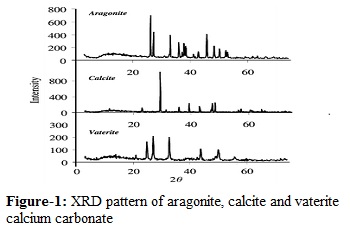Day 2 :
Keynote Forum
Paolo Scardi
University of Trento, Italy
Keynote: Static and dynamic atomic disorder in nanocrystalline systems
Time : 09:10-09:40

Biography:
Paolo Scardi is a Full Professor of Material Science and Technology and Head of the PhD School in Civil, Environmental and Mechanical Engineering at the University of Trento, Italy. He is the author of more than 250 papers and his main interest concerns diffraction and crystallography with applications to materials science. His recent work focuses on thin films and highly deformed materials, photovoltaic devices, residual stress analysis and atomistic modeling of nanocrystalline materials.
Abstract:
Much is known about the effect of size and shape of metal nanocrystals on their catalytic activity. Size effect may appear obvious for the direct relation with the total surface area exposed to the environment, whereas shape is a major factor controlling selectivity of the catalytic reaction. Palladium nanocrystals, for example, can catalyze a variety of oxidation reactions, but the yield of the process is strongly influenced by the exposed nanocrystal facets: Better O2 activation occurs on (100) than on (111) facets, for the differences in the O-O bond stretch and spin charge density. As a consequence, Pd nanocubes are much more effective than nanooctahedra in oxygen-related catalytic reactions. The different, generally lower coordination of surface atoms reflects in an excess surface energy, which in many metals gives shorter bond distances between surface atoms, causing an average shrinking of the nanoparticle. The atomic displacement influences electronic properties, leading to d-band center modification and, in general, surface properties differing from corresponding bulk materials. Change in bond distances is largest on the surface, gradually decreasing toward the nanoparticle core; therefore, the displacement field is inhomogeneous and depends on nanocrystal size and shape. In addition to the static component, dynamic displacement in nanocrystals is also peculiar: Phonon confinement arises from the finite size, capping longest possible phonon wavelengths, while additional effects are due to the amplitude of thermal vibration, changing toward the surface for the decreasing coordination. The present contribution shows how X-ray spectroscopies can shed light on the behavior of metal nanocrystals, influenced by complex relations between size, shape, surface atomic coordination and bond distances. Atomistic approaches are indispensable to go beyond the limits of traditional crystallography, clearly inappropriate to deal with small crystals. In particular, we show how X-ray diffraction, applied to powders of nanocrystals with definite shape and little size dispersion can provide detailed information on atomic disorder.
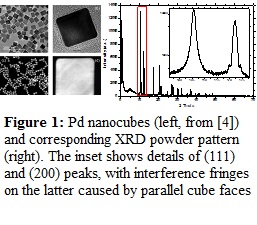
Keynote Forum
Xavier Feaugas
University of La Rochelle, France
Keynote: Hydrogen diffusion in nickel single- and poly-crystals: the effects of self-stress
Time : 09:40-10:10

Biography:
Professor Xavier Feaugas has published over three hundred papers, and several collective books in the field of physics, mechanics and metallurgy. His research interests lie in the area of physical bases of solid plasticity and crack initiation with a focus on interactions between plasticity and surface reactivity to understand the inception of hydrogen embrittlement and stress corrosion cracking. The main research topics are: physical bases of solid plasticity and crack initiation (dislocation pattern, slip activity, slip, irreversibility, local approach of fracture …) - Interaction between plasticity and surface reactivity (dissolution, hydrogen adsorption, passivity…) - Multi-physics modeling (ratcheting, cyclic over-hardening, hexagonal slip plasticity, thermo-kinetic modeling, polymer and composite degradation, diffusion …) - Hydrogen Embrittlement/Stress Corrosion Cracking - Crystallographic defects (dislocation, vacancy, grain-boundaries, …), length scales, internal stresses – physical and metallurgy thermodynamic. More recent trend of its works is focus on the different aspects of the interactions between the hydrogen solute and the crystallographic defects formalized in thermodynamic framework.
Abstract:
Hydrogen diffusion and trapping has an important role in solute-dependent hydrogen embrittlement in metals and metallic alloys. In spite of extensive studies, the complexity of hydrogen diffusion in solids remains a phenomenon that needs to be clarified. The effects of the grain boundaries (GBs), and several defects (dislocations, vacancies …) and their interactions with hydrogen on the mechanisms of metal damages remain a controversy. Actually, several works suggest that the grain boundaries represent preferential paths for hydrogen diffusion, and this kind of hydrogen diffusion along GBs is higher than the interstitial diffusion. However, grains and GBs contain different defects, particularly, dislocations and vacancies. These defects are able to trap hydrogen affecting the diffusion mechanisms. Although a number of theories have been proposed to describe the role of GBs for hydrogen diffusion and segregation, none of them is able to give an exact answer. In present work we report our recent works [1-5], which support the investigation of diffusion in pure nickel single crystals and poly-crystals using both an experimental approach and a thermodynamic development. We have studied at the first time some nickel single crystals. We evaluate the hydrogen diffusion and trapping mechanisms using the electrochemical permeation (EP) coupled to the thermal desorption spectroscopy (TDS). Later, we propose to screen several bi-crystals of pure nickel with different grain boundaries. For each ones, the hydrogen diffusion and segregation are studied using EP and TDS analyses. In addition, Molecular Dynamics (MD) simulations have become a useful method to comprehend the becoming of hydrogen in these types of GBs. The results allow us to associate the short-circuit diffusion and trapping phenomena to the grain boundaries and defect characters (excess volume, defects density and distribution …). In each situation, we highlight the importance of the self-stress on the processes of diffusion and segregation.
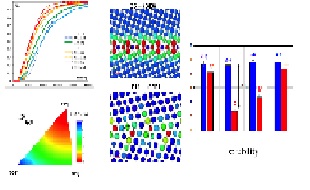
Keynote Forum
Yimei Zhu
Brookhaven National Laboratory, USA
Keynote: Disentangle phonon modes using ultrafast electron diffraction and timely-resolved electron crystallography
Time : 10:10-10:40

Biography:
Yimei Zhu is a Senior Physicist at Brookhaven National Laboratory (BNL) and Adjunct Professor at Columbia University and Stony Brook University. He has received his BS from Shanghai Jiaotong University in 1982, MS and PhD from Nagoya University in 1987. He joined BNL as an Assistant Scientist in 1988, rising through the rank to become Tenured Senior Physicist in 2002. He is the Founding Director of the Institute for Advanced Electron Microscopy and Facility Leader of the Functional Nanomaterials at BNL. His research interests include electron crystallography of condensed matter physics of strongly correlated electron systems and advanced electron microscopy including ultrafast microscopy instrumentation. He is an Inaugural Fellow of Microscopy Society of America, a Fellow of American Physical Society and a Fellow of American Association for the Advancement of Science. He has published more than 500 peer-reviewed journal articles and delivered more than 300 invited talks at international conferences.
Abstract:
Polaron transport, in which electron motion is strongly coupled to the underlying atomic lattice, is crucial to understanding the electrical conductivity in many solids. The accompanying atomic displacements are themselves coupled through phonons, but the specific phonon modes responsible for the dynamics of polaron motion have rarely been identified. In this presentation, I will first give an overview on the 2.8 MeV ultrafast electron diffraction instrument and the time resolved electron crystallography method we developed at BNL, then focus on its application to understand charge, orbital and lattice coupling and interaction in strongly correlated electron systems. A detailed example will be given on quantifying the dynamics of both electronic and atomic motion in the LaSr2Mn2O7 manganite. Using photoexcition to set the electronic system in motion, we find that Jahn-Teller-like O, La/Sr, and Mn4+ displacements dominate the lattice response and exhibit a dichotomy in behavior overshoot-and-recovery for one sub-lattice versus normal behavior for the other. This dichotomy, attributed to slow electronic relaxation, proves that polaron transport is a key process in doped manganites. Our technique with the access to high-order reflections and being sensitive to phonons promises to be applicable for specifying the nature of electron-phonon coupling in many complex materials.
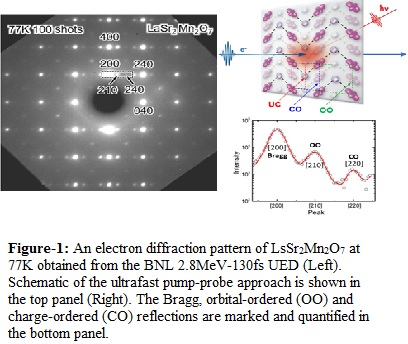
- Speakers Session 1: Advanced Crystallography | Crystallography in Biology |Chemical Crystallography|Crystal Growth
Location: Conference Hall: Zurich

Chair
J. Rouquette
University of Montpellier, France
Session Introduction
Anton S Tremsin
University of California at Berkeley
Title: Non-destructive studies of microstructure and elemental composition of crystalline materials through energy-resolved neutron imaging
Time : 11:40-12:00

Biography:
Anton S Tremsin is currently working on the development of novel non-destructive testing techniques utilizing unique combination of high resolution event counting neutron detectors and bright pulsed neutron sources. The detectors developed by him enable simultaneous detection of >250 thousand transmission spectra in each 55×55 µm2 pixel, enabling studies of microstructure of crystalline materials and mapping of their elemental composition, both ex situ and even in situ, as these materials are being grown at high temperatures. A wide range of new state-of-the art experimental techniques in combination with data analysis tools have been demonstrated by him over recent years in the field of materials science, structural engineering, single crystal growth and characterization, studies of magnetic phenomena, geosciences and many others, result of which were presented at many international conferences and published in more than 200 research papers.
Abstract:
Energy-resolved neutron imaging provide unique possibilities to study materials non-destructively in situations, where other more conventional techniques fail due to opacity of materials or their surrounding equipment (e.g., high temperature furnaces in case of crystal growth). Microstructure of both polycrystalline and single crystal materials can be investigated due to the presence of Bragg scattering of neutrons with wavelengths comparable to crystal lattice parameters. At the same time the elemental composition and temperature of the material can be mapped remotely with ~0.1 mm resolution through the analysis of neutron resonance absorption at epithermal energies, all from one measurement with no need to scan through the sample and thus allowing quantitative studies of relatively slow dynamic processes, such as crystal growth. In this paper we demonstrate the unique capabilities of energy-resolved neutron imaging to measure strain and some texture variation within metal welds, loaded fastener assemblies and metal samples produced by additive manufacturing. In situ diagnostics of crystal growth parameters such as shape and location of liquid/solid interface, mapping the elemental composition and visualization of macroscopic crystal defects and crystal mosaicity are also shown for the growth of single crystal gamma scintillators. For some compound materials, such as Cs2LaLiBr6:Ce and BaBrCl:Eu, we directly observed dynamics of phase separation within the liquid phase as well as dynamics of liquid/solid interface and dopant segregation during crystal growth at 550 oC and 850 oC temperatures, respectively. These novel studies became possible with the recent progress in novel high resolution neutron fast counting detectors and bright pulsed beamlines at spallation neutron sources, as well as development of novel data analysis tools capable of processing hundreds of thousands neutron transmission spectra in acceptable time, both of which will be briefly described in the paper.
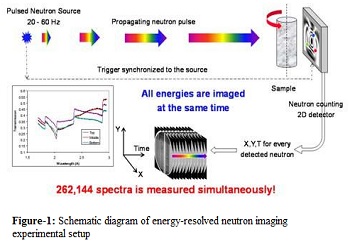
Bernd Hinrichsen
BASF SE, Germany
Title: Crystal structures of polymers: Will PDF paves the way to greater understanding?
Time : 12:00-12:20

Biography:
Bernd Hinrichsen has his scientific foundation in crystallography, having attained his PhD at the Max Planck Institute for Solid State Research under the supervision of Robert E. Dinnebier. He spent some time at Bruker AXS as an Application Scientist for powder X-ray diffraction before taking over the responsibility of the powder X-ray diffraction lab at the main research site of BASF in Ludwigshafen, Germany. He is currently responsible for PXRD, Solid-State, NMR, TEM and SEM labs.
Abstract:
Industrial polymers (plastics) are a fundamental part of modern society. The global production of polymers has been growing steadily from the tentative beginnings in the 1940s to 322 million tons in 2015. This immense and ubiquitous use of polymers has led to dramatic pollution issues and legislation curtailing use of environmentally detrimental polymers. Surprisingly little is known about the solid-state structure of these megaton products. Nuclear magnetic resonance studies elucidate the molecular structure in a liquid solution, transmission electron microscopy gives an inkling into the solid-state microstructure; however the chemistry involved in polymeric structures are only well characterized for a few examples by X-ray diffraction studies. Often these are performed on idealized samples, not necessarily representative of the real-life material. We will be presenting works that have been carried out and illustrate the potential which the PDF method brings to polymer research with special focus on challenging subjects such as bio-degradation.
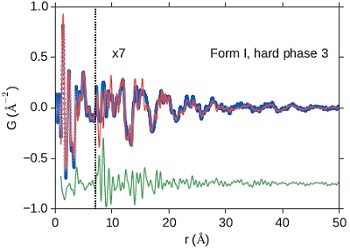
Eiji Nishibori
University of Tsukuba, Japan
Title: Observation of π electron in metal hexaboride through X-ray charge density
Time : 12:20-12:40

Biography:
Eiji Nishibori is currently a Professor of Division of Physics, Faculty of Pure and Applied Sciences, University of Tsukuba, Japan. He has received his Bachelor's and Master’s degree from Nagoya University, Japan. He was appointed an Assistant and Associate Professor at Nagoya University. He was then appointed as the Director of RIGAKU-RIKEN collaboration center at SPring-8. His main research field is structural science using a synchrotron radiation X-ray including a development of experimental and analytical system. He has received several awards including Young Scientists' Prize, the Commendation for Science and Technology by the MEXT, the CrSJ Young Scientist Award and the Crystallographic Society of Japan.
Abstract:
Metal hexaborides MB6, where M is an alkaline earth or rare earth metal exhibit metallic and semiconductor properties by changing the M ion. The metal hexaborides have a B6 octahedron in the structure. The M ion is located at the body-center surrounded by the B6 octahedra. The B6 octahedron has 18 valence electrons. Two electrons per B6 octahedron are required to fulfill the bonding orbital of B6. Metal hexaborides with divalent metal ions are considered to be semiconductor and with the trivalent ions are metal from the consideration. Theoretical study suggests that the p-electron like an anti-bonding orbital of B6 contributes electrical conductivity in the metallic trivalent MB6. We investigated the charge densities of divalent and trivalent metal hexaborides, semiconducting BaB6 and metallic LaB6 using the d>0.22 Å ultra-high resolution synchrotron radiation X-ray diffraction data by a multipole refinement and a maximum entropy method. High resolution powder diffraction data were measured at SPring-8. The strong inter-octahedral and relatively weak intra-octahedral boron-boron bonds were observed in the charge densities. A difference of valence charge densities between LaB6 and BaB6 was calculated to reveal a small difference between isostructural metal and semiconductor. The weak electron lobes distributed around the inter B6 octahedral bond were observed in the difference density. We found the electron lobes are the conductive p electrons in LaB6 from the comparison with the theoretical charge density. We have successfully visualized very small amount of conductive p electrons from X-ray charge density. Electron density distribution is now one of the most information-rich observable owing to the great improvement of experimental situation such as synchrotron X-ray source.
Franck Artzner
Rennes University, France
Title: Atomic view of the histidine environment stabilizing higher-pH conformations of pH-dependent proteins
Time : 12:40-13:00

Biography:
Franck Artzner’s bio-inspired self-assemblies group addresses materials issues from fibrillation of pharmaceutical peptides to the colloids crystallization by fibrillar proteins. The group has an expertise in technical development as well as crystallographic characterization of structures by unconventional X-ray scattering techniques, SAXS, Fiber Diffraction. A Joint Laboratory with IPSEN and Maïté Paternostre is headed by Franck Artzner and investigates commercial formulation of self-assembled peptides. FA was the chairman of the National brain storming group on Bio-inspired Nanotechnologies at OMNT. He is involved in the review committees of synchrotons : SOLEIL, ESRF, NSLS I. He received the Young Investigator Award of the Physical Chemistry Division of the French Chemical Society (SFC) and the French Physical Society (SFP) in 2015, and the Delalande prize from the French Pharmaceutical academy in 2016
Abstract:
External stimuli are powerful tools that naturally control protein assemblies and functions. For example, during viral entry and exit changes in pH are known to trigger large protein conformational changes. However, the molecular features stabilizing the higher pH structures remain unclear. Here we elucidate the conformational change of a self-assembling peptide that forms either small or large nanotubes dependent on the pH. The sub-angstrom high-pH peptide structure reveals a globular conformation stabilized through a strong histidine-serine H-bond and a tight histidine-aromatic packing. Lowering the pH induces histidine protonation, disrupts these interactions and triggers a large change to an extended β-sheet-based conformation. Re-visiting available structures of proteins with pH-dependent conformations reveals both histidine-containing aromatic pockets and histidine-serine proximity as key motifs in higher pH structures. The mechanism discovered in this study may thus be generally used by pH-dependent proteins and opens new prospects in the field of nanomaterials. This work is based on three complementary x-ray techniques: Single crystal solving at 0.85 Å, Fiber diffraction at wide angles that gives insight into the molecular structures, and, SAXS, Small Angle X-ray Scattering that illuminates the packing and the radial electron density profiles of the nanotubes. The full x-ray analysis that reveals both nanostructures at the molecular scale will be detailed.
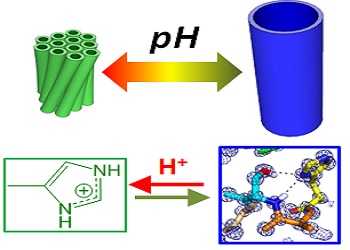
Eric J Chan
Bristol Myers Squibb, USA
Title: On the application of molecular simulation tools in studies of organic molecular crystals. (i.e. Modelling disorder and other crystalline properties)
Time : 13:50-14:10
Biography:
Eric J Chan has completed his graduate studies in Organic Chemistry/Biochemistry, PhD in coordination chemistry of metal-organic complexes and chemical crystallography and Post-doctoral study in X-ray single crystal diffuse scattering interpretations, molecular models, and Monte Carlo methods for molecular simulation, solid state organic chemistry and analysis of organic solids. He has expertise in crystallography, solid-state or materials chemistry and molecular simulations. He has interest in computational physics approaches used in chemistry. Graduate in organic chemistry/biochemistry, PhD: coordination chemistry of metal-organic complexes and chemical crystallography.
Abstract:
Analysis and prediction of physical properties of crystalline materials is of crucial importance. For example, a pharmaceutical crystal form must satisfy a target profile with respect to process-ability as well as bioavailability. In the material development arena, undesirable physical phenomena offer non-trivial challenges. Such phenomena include polymorphism, disorder, solvation/de-solvation, disproportionation and variation in the crystal particle size shape; because these phenomena impact the physical structure and related properties of a material, challenges also exist analytical and characterization perspective. Nowadays varieties of atomistic simulation techniques are useful to support analysis, provide further chemical/physical insight and for risk assessment/predictive capabilities. The once active laboratory chemical crystallographer may be forced to seek refuge in silico. Such computational activities are facilitated by a plethora of commercial and community software tools and codes. However, in some cases workflows and tools are not as streamlined and options are limited, the former experimentalist then takes the role of a computer scientist. We discuss a selection of case studies where such former mentioned novel molecular simulation hackwork is applied to small molecule crystallography, the majority being pharmaceutically relevant. Example workflows include atomistic simulation methods (MC or MD) useful for interpreting supplementary scattering features like diffuse and satellite intensities from single crystal X-ray diffraction. One study demonstrates insight into de-solvation processes. For understanding the interplay between different solvents within the crystal structure, a Grand Canonical Monte Carlo (GCMC) model was developed combining crystal structure, molecular mechanics models and SSNMR data. This was useful to estimate site occupation parameters for solvent bound to a crystal. We argue the supplementary knowledge of molecular level interactions provides a simple means for prediction of the corresponding thermodynamic properties such as the solvent activities and temperatures required to remove or replace unwanted lattice solvent. Another example includes in silco screening for solvent effect on crystal morphology.
Fuyuki Ito
Shinshu University, Japan
Title: Visualization of evaporative crystallization dynamics probed by fluorescence colour changes
Time : 14:10-14:30

Biography:
Fuyuki Ito received his Ph.D. in 2004 from Tohoku University under the direction of Prof. Shozo Tero-Kubota. He worked as a postdoctoral fellow at Osaka University. He moved to Kyushu University in 2005 as a research associate. In 2009 he moved to Shinshu University and became an associate professor in 2010. His research interests photochemistry of molecular-assembly system and crystal formation process of organic molecules.
Abstract:
Crystal formation from a solution is necessary for the fabrication of organic solid material. In solution crystallization, the formation of crystal nuclei plays an important role in determining crystal structure, size and polymorphism, and their crystal quality. Recently, a two-step nucleation model was developed to explain protein crystallization; involving a liquid-like cluster intermediate before nucleation, which has been shown to be of more general validity. The two-step nucleation model replaces the classical model of crystallization that is molecules are added on one by one to extend the crystal lattice and form embryo clusters in a one step process. Liquid-clusters are believed to originate from disordered liquids or amorphous metastable clusters in homogeneous solutions. We have focused the fluorescence detection for crystal formation process. The fluorescence spectra of the materials are sensitive to molecular environment and aggregation. In principle, the evolution of the molecular assembly can be assessed by fluorescence spectroscopy on the scale of only a few molecules or a bulk process scale. We have investigated fluorescence spectral changes of perylene and cyanostilbene derivatives showing aggregation-induced emission during solvent evaporation by fluorescence microscopy. We have claimed that the information on molecular assembly and crystal nucleation and growth processes is obtained by studying the concentration-dependent fluorescence spectral change of organic fluorescent dyes in the polymer film and solvent evaporation. In this paper, we investigate the fluorescence properties of 4,4’-di-tert-butyldibenzoylmethane boron difluoride (BF2DBMb) solutions during evaporative crystallization. BF2DBMb exhibits mechanofluorochromism, which originates from the different emission properties of its amorphous and crystalline states.

Huifang Xu
University of Wisconsin–Madison, USA
Title: Understanding interface and surface structures of Nano-phases in natural Fe-oxyhydroxide and Fe-bearing olivine minerals
Time : 14:30-14:50

Biography:
Huifang Xu has received his Bachelor’s degree from Nanjing University and PhD degree from The John’s Hopkins University in field of Mineralogy and Crystallography. He has completed his Postdoctoral studies at Arizona State University in area of Electron Crystallography. He is a Faculty Member in the Department of Geoscience and Materials Science Program at the University of Wisconsin-Madison. His research interests are studies of incommensurately modulated structures and nano-phase structures using e-beam imaging, X-ray diffraction and neutron scattering methods. He has published more than 100 papers in fields of mineralogy, crystallography and inorganic materials. He is an elected Fellow of Mineralogical Society of America.
Abstract:
Understanding interface structures, nano-precipitates, vacancies, impurities and adsorbed atoms on mineral surfaces are important to elucidate formation mechanism and reactions of minerals in the earth environments. Aberration-corrected Z-contrast imaging can provide chemical images with sub-Å resolution. Z-contrast images are HAADF images with atomic resolution. Multiple diffraction effects that appear in high-resolution transmission electron microscopic (HRTEM) images can be eliminated or minimized in Z-contrast images, because Z-contrast imaging uses non-coherent elastically scattered electrons at high scattering angle. We can obtain positions of atoms directly over a large range of thickness with Z-contrast to help distinguish columns of different atoms and their occupancies along the beam direction. Interface structures and crystal structures of nano-minerals and nano-precipitates can be solved by combining the Z-contrast imaging and ab initio calculation using density functional theory (DFT) methods. Vacancies, impurities, adsorbed heavy atoms can be also revealed directly. Vacancy ordering in Fe-bearing olivine and Fe-sulfides, adsorbed heavy metals (e.g., As, Au, U) on Fe-oxyhydroxide minerals are resolved clearly. Z-contrast images of the Fe-oxyhydroxides show ordered FeOOH proto-goethite nano-domains intergrown with nanophase goethite. The FeOOH nanophase is a precursor to the goethite. DFT calculations indicate that goethite is more stable than proto-goethite. Our results suggest that ordering between Fe and vacancies in octahedral sites result in the transformation from feroxyhyte to goethite through a proto-goethite intermediate phase. Combining Z-contrast images and TEM-EDS reveals that arsenate (AsO43-) tetrahedra are preferentially adsorbed on the proto-goethite (001) surface.
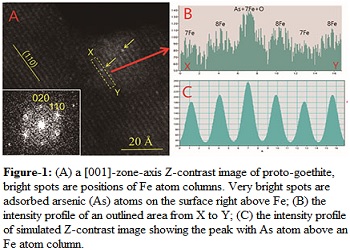
J. Rouquette
University of Montpellier, France
Title: Interplay between H-bonding and charge ordering in Fe3 (PO4)2(OH)2 barbosalite
Time : 14:50-15:10

Biography:
J Rouquette has obtained his PhD in Julien Haines’ group in Materials Science (Condensed Matter) from University of Montpellier, France in 2004 and was a Postdoctoral Fellow in Leonid Dubrovinsky’s group at the Bayerisches Geoinstitut in Bayreuth University, Germany for two years. He has joined the CNRS as a Researcher in 2004 in the field of ferroelectrics/multiferroics and he defended his Habilitation in 2012 entitled “insitu structural studies of ferroic materials as a function of P,T,E,B. He has published more than 50 research papers in these areas.
Abstract:
Charge Ordering (CO) in transition metal oxides is an important parameter for obtaining original magnetic and/or electric properties. That was largely shown within the framework of the studies on colossal magneto-resistance in manganese perovskites and it again seems to be at the origin of the ferroelectricity in CaMn7O12 or LuFe2O4. The mixed valence of iron in the system is a particular motivation in view of the long lasting research on the understanding of the effects of pressure on charge order/magnetic order in iron compounds such as the LuFe2O4 new charge ordered state and the pressure dependence of its magnetic order. Here we focus on Fe2+Fe3+2(PO4)2(OH)2 barbosalite single crystal, an hydroxyphosphate of iron which exhibits a mixed valence state. High pressure behavior of barbosalite was successfully characterized based on single crystal X-ray diffraction, Raman and infrared spectroscopies. Fe2+Fe3+2(PO4)2(OH)2 presents two phase transition at close to 3 and 8 GPa respectively which are clearly governed by an interplay between H-bonding and electron delocalization. Moreover the temperature reaction Fe2+Fe3+2(PO4)2(OH)2Ò Fe3+3(PO4)2(OOH).
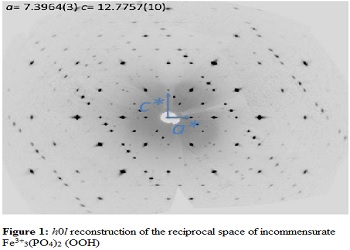
Kamal Choudhary
NIST, USA
Title: Applications of crystallography data in force-field and density functional theory calculations: JARVIS database
Time : 15:10-15:30

Biography:
Kamal Choudhary has expertise in molecular dynamics, density functional theory and machine-learning based calculations. He has built JARVIS database at NIST to enable users access classical and quantum mechanical data of material free of cost to enable future materials discovery. He was graduated with PhD in Materials Science and Engineering from University of Florida in 2015 under the guidance of Dr. Susan B Sinnott.
Abstract:
Crystal structure information can be used to characterize material-properties using quantum density functional theory and classical force-field calculations. JARVIS database is a part of Materials Genome Initiative at National Institute of Standards and Technology (NIST) enabling users to access material property calculation data through easy web-interface. JARVIS-FF database currently consists of 3248 entries including energetics and elastic property calculations and it is still increasing. We also include computational tools for convex-hull plots for DFT and FF calculations. The data covers 1471 materials and 116 force-fields. A major feature of this database is that the web interface offers easy look up tables to compare at a glance the results from different potentials (for the same system). In addition, both the complete database and the software coding used in the process have been released for public use online. JARVI-DFT database consists of more than 5000 DFT calculations for three-dimensional (3D) bulk and single layer 2D materials data for structural, electronic and elastic properties. We use lattice-constant criteria to identify potentially novel 2D materials. We predicted at least 1485 2D materials based on relative error in lattice constants obtained from semi-local DFT and Inorganic Crystal Structure Database (ICSD) data. We calculate exfoliation energy as a verification of our lattice-constant criteria.
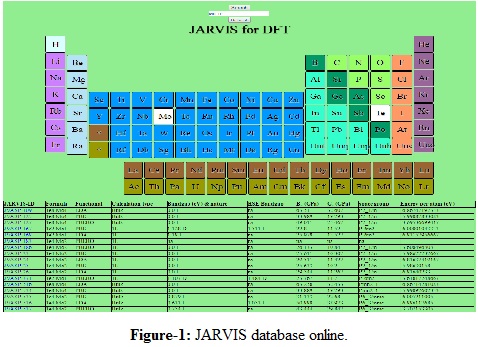
Koji Ohara
JASRI/SPring-8, Japan
Title: Structural study of sulfide glassy electrolytes for all-solid-state batteries
Time : 15:30-15:50

Biography:
Koji Ohara has received his PhD in Condensed Matter Chemistry and Physics from Kyushu University of Japan, working with Prof. S. Takeda. He then did his Post-doctoral research with S. Kohara at Japan Synchrotron Radiation Research Institute (JASRI), where he studied elemental specific pair distribution function (PDF) analysis using anomalous X-ray scattering for disordered materials. After two years at JASRI, he moved to the position of Research Assistant Professor at Office of Society-Academia Collaboration for Innovation of Kyoto University in 2012. He has worked on structural studies of electrolytes in lithium ion batteries. He has been working as a Researcher at JASRI since 2015.
Abstract:
Sulfide glass ceramics are of interest for use as solid electrolytes in lithium ion batteries, because the realization of an all-solid-state battery will enable the miniaturization of battery packages and reduce safety issues. In general, the crystallization of glassy materials results in a decrease in the conductivity, although it increases in a few sulfide glasses owing to the crystallization of a highly conductive new phase. Significant progress has been made so far with the discovery of numerous sulfide crystalline compounds with high ionic conductivities such as Li7P3S11, Li10GeP2S12, Li7P2S8I and Li10SnP2S. Their conductivities are higher than those of the corresponding sulfide glasses. Recently, we reported that 75Li2S-25P2S5 glass in the binary Li2S-P2S5 system with strongly polarized sulfur has high ionic conductivity. In the sulfide glasses as presented here, an interesting improvement in the conductivity is observed during annealing, which appears in the glassy phase. In this presentation, we report the local glassy structure with a mixture of glass and crystalline phases by using synchrotron X-ray pair distribution function (PDF) analysis. The differential pair distribution function is utilized as a methodology for the mixed materials in our work to extract the glassy structure in the 75Li2S-25P2S5 sulfide glass ceramic. This method quantitatively reproduced the fraction of mixed phases, which was in agreement with the result of NMR. The extracted glassy structure exhibited no changes during the annealing treatment. Owing to the crystallization of the majority phase, the ionic conductivity in this glass decreased after crystallization. We observed the formation of a nanocrystalline phase in the diffraction pattern obtained during the annealing. Thus, our present finding of minority component is expected to lead to further understanding for the development of solid electrolytes with high ionic conductivity.
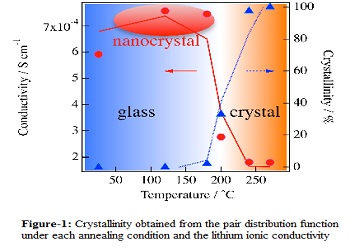
- Speakers Session 2: Advanced Crystallography | Crystallography in Biology |Chemical Crystallography|Crystal Growth
Location: Conference Hall: Zurich

Chair
Rama S Madhurapantula
Illinois Institute of Technology, USA
Session Introduction
Michal Lahav
Weizmann Institute of Science, Israel
Title: Designing chiral metal-organic assemblies
Time : 16:10-16:30

Biography:
Michal Lahav has completed her BSc and PhD studies in Chemistry from the Hebrew University of Jerusalem, Israel. She was a Postdoctoral Researcher at the Weizmann Institute of Science for two years before she moved to Harvard University, where she studied nanochemistry. After two years of postdoctoral work in the United States, she returned to Israel and started to work as a Scientific Advisor at the Weizmann Institute of Science. She was appointed as an Associate Staff Scientist in the Department of Organic Chemistry in 2011. Her interdisciplinary materials chemistry research is related to the self-assembly of metallo-organic materials for energy storage and for electrochromics whose products are now being patented. Her work is related to fundamental understanding of the formation and electronic properties of these metallo-supramolecular architectures. Her prizes and honors include the Dr. Maxine Singer Prize for Outstanding Staff Scientists.
Abstract:
Coordination-based polymers and metal-organic frameworks (MOFs) have been explored since their serendipity discovery by a Berlin color-maker named Diesbach at the beginning of the 18th century. These intriguing materials combine metal-coordination chemistry with the often complex formation of large supramolecular structures and may exhibit optical, catalytic, redox and magnetic functions derived from their metallic elements. Such materials are currently generated by the dozens in a gold-rush-type search for unique properties mainly related to the storage and release of energy (e.g., hydrocarbons, dihydrogen) at ambient temperatures and pressures. How the molecular components, metal salts and experimental conditions control the dimensions, shapes and homogeneity of these coordination-based materials is barely known. Moreover, the formation of chiral MOFs and MOFs confined on surfaces is especially challenging. We demonstrated the controlled generation of various homogeneous MOF structures from solution and on surfaces. Using a versatile ligand system that binds late-transition metals in a defined manner, we address various challenging issues related to the mechanism underlying the formation of such homogeneous structures at the (sub)-microscale, their magnetic and electronic properties and other functions. These new chiral materials have been characterized by a series of complementary methods, including electron microscopy, X-ray powder diffraction, atomic force microscopy and synchrotron X-ray reflectivity.

Milko E. van der Boom
Weizmann Institute of Science, Israel
Title: Old forces to create new materials
Time : 16:30-16:50

Biography:
Milko E van der Boom has completed his BSc in Chemical Engineering at the Amsterdam University of Applied Sciences and his MSc degree in Inorganic Chemistry at the University of Amsterdam. In 1994, he was enrolled as a Doctoral student at the Weizmann Institute of Science, where he studied Organometallic Chemistry and was awarded his PhD degree with distinction in 1999. After three years of Postdoctoral work at Northwestern University, where he studied the formation of functional organic films, he returned to the Weizmann Institute’s Department of Organic Chemistry in 2002. His interdisciplinary materials chemistry research focuses on metalloorganic-oriented synthetic and mechanistic studies. His prizes and honors include an Alon Fellowship from the Israel Council for Higher Education
Abstract:
Enabling and understanding new methodologies to fabricate molecular assemblies driven by intermolecular interactions is fundamental in chemistry. Such forces can be used to control crystal growth and enable surface-confinement of these materials, which remains challenging. In the 1960s, the late Gerhard M. J. Schmidt from the Weizmann Institute of Science discovered that some molecules are unusually closely arranged in organic crystals. This spatial arrangement turned out to be a result of an unexplored weak intermolecular interaction, termed “halogen bonding” many years later by other scientists. Such interactions play a key role in organic processes (in a cell or organism) that are necessary for sustaining life. For example, thyroid hormones use halogen bonding to bind to receptors in order to regulate the development, growth and metabolism of the cells in our body. We demonstrate a solvent-free on-surface crystal-to-co-crystal conversion process driven by halogen bonding (XB). By exposing a polycrystalline organic material, consisting of a XB-acceptor moiety, to the vapors of a complementary XB-donor compound, the corresponding halogen-bonded co-crystals were formed. Furthermore, we show that this approach can also be utilized for non-crystalline materials to afford surface-confined organic composites. Our stepwise vapor-based approach offers a new strategy for the formation of hybrid supramolecular materials.
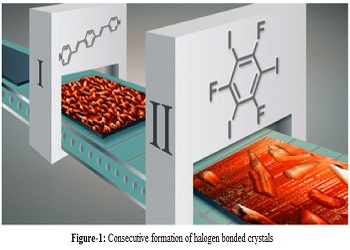
Rocio Jauregui
National Autonomous University of Mexico, Mexico
Title: Nonlinear crystallography with structured light: Classical and quantum optics effects
Time : 16:50-17:10

Biography:
Rocío Jáuregui performed her graduate and postgraduate studies at the Universidad Nacional Autónoma de México. (UNAM). She has worked on the interaction of light and matter from diverse points of view: high precision atomic spectroscopy, effects of boundary conditions on the electromagnetic field, pair creation and modification on atomic transition rates due to moving boundaries, classical and quantum description of structured electromagnetic fields and their effect on thermal and ultracold atomic samples, simulations of ultracold bosonic and fermionic atoms, and the analysis of quantum nonlinear optical response of different media. Her work has been supplemented by teaching activities. Nowadays, Prof. Jáuregui coordinates the Laboratorio Nacional de Materia Cuántica which incorporates 11 Mexican research institutions and chairs the Department of Quantum Physics and Fotonics of Instituto de Física (UNAM)
Abstract:
An alternative to diffraction techniques is the characterization of the point symmetry group of a crystal by its effects on the nonlinear optical response encoded in the susceptibility tensors. In this work, we show that it is possible to perform complementary symmetry studies of nonlinear materials by using nonlinear processes besides second harmonic generation 1. We also show that structured light can enhance the tracks of the symmetry of a crystal on its nonlinear optical properties2,3 . We focus on the usage of light beams that can be described as the superposition of plane waves with wave vectors confined in a cone and with cylindrical symmetry on the angular spectrum (Bessel beams). This is equivalent to observing the crystal simultaneously from many different angles. The polarization structure of these beams out of the paraxial regime allows to incorporate information from all the components of the susceptibility tensors using a single structured illumination beam. The crystallographic analysis is exemplified for the parametric down conversion process4 . It is shown that, for an uniaxial birefringent nonlinear crystals, a proper orientation of a non paraxial Bessel beam induces the emission of photon pairs in directions that reflect directly the point symmetry. Both the flux rate of signal photons (with a clear classical analog) and coincidence detections (with a pure quantum interpretation) exhibit traces of the crystal symmetries.

Seok-min Kim
Chung-Ang University, Republic of Korea
Title: Fabrication of single crystal silicon nanowires by metal assisted chemical etching with Nano imprinted barrier pattern
Time : 17:10-17:30

Biography:
Seok-min Kim received his PhD degree from the School of Mechanical Engineering at Yonsei University, Seoul, Republic of Korea. He is currently an associate professor in the School of Mechanical Engineering at Chung-Ang University, Seoul. His current research interests include design and fabrication of micro/nanostructures for optical component, gas/bio sensors, micro fluidic chips, and enhanced boiling heat transfer surface.
Abstract:
To fabricate the silicon nanowires, various methods such as vapor-liquid-solid growth, reactive ion etching with barrier pattern, oblique angle deposition and metal assisted chemical etching (MACE) have been developed. The MACE can provides a high aspect ratio and undamaged single crystal silicon nanostructures using low-cost wet etching process. In the MACE process, a patterned noble metallic structure etches the silicon substrate anisotropically in aqueous solutions containing hydrogen fluoride and an oxidant, and an isolated single crystal vertical silicon nanowires are obtained. Since the geometrical structure of silicon nanowire is mainly determined by the initial metallic pattern, the fabrication of metallic nanostructure on a silicon substrate is the key technology in the MACE process. To obtain highly ordered nanowires with precisely controlled diameter and distribution, the various metal patterning method such as electron beam lithography, photolithography and nanosphere lithography were suggested. In this study, we fabricated a highly ordered large area ultraviolet (UV) nanoimprinted etch barrier pattern on an Au catalyst layer with low cost for MACE process. A silicon nanodot master having 500nm pith, 250nm diameter and 125nm height was prepared by KrF laser scanning lithography. A transparent flexible mold was UV replicated from the silicon master, and a nanodot barrier pattern was UV imprinted on a PMMA lift-off layer coated silicon wafer. After RIE process with O2 gas, the silicon surface was exposed except nanodot barrier patterned area. An Au layer was deposited on silicon wafer using thermal evaporator and UV imprinted nanodot barrier were lift-offed with PMMA layer in acetone solution with ultrasonication process. Finally, Au nanohole array was fabricated and MACEed in hydro fluoride and hydrogen peroxide mixed aqueous solution. Depending on the etching time, 300 – 8000 nm heights silicon nanowire arrays were successfully demonstrated.
This study was supported by a grant of the Korean Health Technology R&D Project, Ministry of Health & Welfare, Republic of Korea. (HI14C2687), and the Technology Transfer Development Program (S2334634) funded by the Small and Medium Business Administration(SMBA, Korea).

Feng Zhang
Ames Laboratory US Department of Energy, USA
Title: ‘Crystal genes’ in metallic liquids and glasses
Time : 17:30-17:50

Biography:
Feng Zhang is an Assistant Scientist III at the Ames Laboratory, US DOE. He received his Ph.D. in physics from Penn State University in 2008, and held a postdoctoral fellow position at Georgia Institute of Technology before joining Ames Lab. His current research interest lies in the structure and dynamics of metallic liquids and glasses, and phase selection during transformations into crystalline structures.
Abstract:
It has been widely speculated that dominant motifs, such as short-range icosahedral order can influence glass formation. Less well understood is how these motifs (crystal genes) in the liquid can influence phase selection upon devitrification. These ‘crystal genes’ are the underlying structural order that transcends liquid, glass and crystalline states. By comparing the amorphous states of the same alloy compositions formed by sputtering and rapid solidification, and their devitrification pathways, we can quantify the distribution of the common packing motifs in the liquid or glass and in stable and metastable phases which form. We will discuss how this approach brings new insight into the origin of vitrification and mesoscopic order-disorder transitions in condensed matter. A genetic algorithm is applied to search for the energetically favorable stable and metastable crystal structures of complex metallic compounds, and a cluster alignment method reveals the most common packing motifs in crystalline and non-crystalline structures.

Sun Jialin
Nanyang Technological University, Singapore
Title: Structural and functional studies of actin interacting protein 5, a novel actin assembly regulator in Saccharomyces cerevisiae
Time : 17:50-18:00

Biography:
Sun Jialin is currently a PhD student majoring in Structural Biology from Agency for Science, Technology and Research and Nanyang Technological University in Singapore. She had a Diploma in Pharmacy Science and found her passion in structural biology later during her undergraduate study. Her focus of work mainly revolves around the structural and functional studies of plant enzymes and actin interacting proteins in yeast. She has expertise in molecular cloning, and as well as X-ray crystallography
Abstract:
Aip5 is a newly identified member of the polarisome complex found in yeast. It acts as actin assembly regulator via binding to other protein partners in the polarisome complex. Polarisome complex helps to establish the polarity of the cell, which is critical for cell growth and division. It is also responsible for actin filament assembly in the cell that contributes to the tissue organization and cell motility. All in all, polarisome is crucial for the survival and division of a yeast cell. Being a new member of the polarisome complex, Aip5 is most likely recruited by its binding partner Spa2 to the tip of the yeast bud during polarized cell growth, to regulate actin filament assembly. Deletion of Spa2 led to the complete loss of localization signal of Aip5 to the polarized region in the cell, while deletion of Aip5 C-terminal had similar effect. These results indicate that Aip5, most probably interact with other polarisome proteins via its C-terminal. Thus it is critical to elucidate the structure of Aip5 given its importance in aiding the actin filament assembly. In this study, we have successfully solved the structure of Aip5 C-terminal at atomic resolution of 1.8 Å. It consists of a dimer per asymmetrical unit, which is consistent with the gel filtration chromatography result. This indicates that Aip5 possibly functions as a biological dimer as well. Preliminary results have shown that the oligomer state of Aip5 might play a part in actin filament assembly. More studies will be conducted to further investigate on the effect of Aip5 oligomer state with to its function
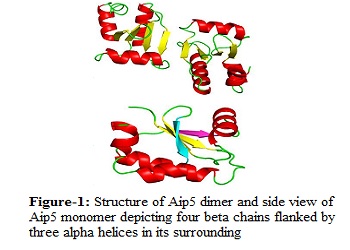
- Speakers Session 1: Crystallography of Novel Materials | Electron Crystallography | Recent development in the X-ray studies| Crystallography Applications
Location: Conference Hall: Zurich

Chair
Stephan Rosenkranz
Argonne National Laboratory, USA
Session Introduction
Victor Ovcharenko
International Tomography Center, Russia
Title: The difference in the P- and T-induced dynamics in breathing crystals
Time : 11:00-11:20

Biography:
Victor Ovcharenko has his expertise in design of molecular magnets and investigation of spin transitions, “breathing crystals” and magneto-structural correlations in heterospin compounds. He developed new methods of selective synthesis of highly dimensional heterospin systems based on metal complexes with stable organic radicals, investigated magneto-structural correlations inherent in heterospin compounds, created a new type of breathing crystals and explained mechanical activity of these crystals (breathing crystals, jumping crystals, dancing crystals).
Abstract:
Reactions between the paramagnetic transition metal ions and nitroxides are convenient and effective methods for the preparation of heterospin crystals. The presence of several paramagnetic centers in heterospin molecules stirred the growing interest in their magnetic properties because these compounds are convenient objects for studying the fine distinctions in exchange interaction channels and revealing valuable magneto-structural correlations. When the temperature (or pressure) changes, the solid compounds undergo structural rearrangements accompanied by magnetic effects similar to spin crossover. The observed anomalies are caused by the reversible spatial dynamics of Jahn-Teller coordination units. The high mechanical stability of the crystals, i.e., their ability of being reversibly compressed and expanded in the temperature range of phase transition, underlies the term breathing crystals. When the cooling–heating cycles are repeated in the range 5-325 K the phase transformations of the heterospin crystals may be accompanied by deep coloring of the solid phase, which is an unusual effect. The possibility of creating spin devices whose working unit is an exchange cluster that changes multiplicity under the action of temperature, pressure, or light was discussed. The effect of a change in the external pressure on the character of the temperature dependence of the effective magnetic moment is discussed. Noteworthy, external pressure variation and temperature variation have essentially different effect on the magneto-structural correlations.
DK. Saldin
University of Wisconsin-Milwaukee, USA
Title: Structure of viruses from experimental data from an x-ray free electron laser
Time : 11:20-11:40

Biography:
Dilano K Saldin is a Professor at the Physics Department of the University of Wisconsin-Milwaukee, where he started as a Surface Physicist, but has over the past 10 years turned his attention to the problem of structure determination in the XFEL particularly of viruses
Abstract:
The X-ray Free Electron Later (XFEL) is a brand new machine capable of delivering X-ray to a sample some 10 billion times brighter than a conventional source. The question is whether one can exploit the ultra-brightness of the source to enable structure determination of identical randomly oriented particles delivered to the beam by means of a sample delivery system specifically designed for this purpose. The particles will be delivered to the XFEL in a specially designed apparatus that delivers identical particles in random orientation. The question is whether one can determine the structure of the particles from the collection of diffraction patterns even though one does not know the precise orientation of the particle in each. We demonstrate a solution with experimental data for the icosahedral virus PR772 from an XFEL. What we exploit is the fact that the angular correlations amongst the intensities are independent of particle orientation. Consequently an average over all diffraction patterns of the angular correlation merely increases the accuracy of the angular correlation measurement. We have developed a method of extracting the X-ray diffraction volume from accurately determined angular correlations. An iterative phasing algorithm then recovers the electron density of the viruses from the diffraction volume
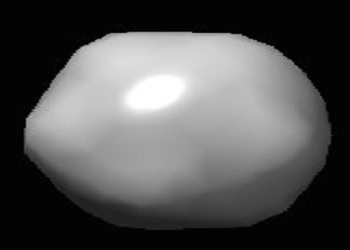
Rama. S Madhurapantula
Illinois Institute of Technology, USA
Title: Structural changes in Type I collagen from non-enzymatic glycation revealed by isomorphous X-ray diffraction
Time : 11:40-12:00

Biography:
Rama S Madhurapantula is a Senior Postdoctoral Research Associate at Dr. Joseph Orgel’s research group at the Illinois Institute of Technology, USA. He is currently involved with work on the changes in molecular packing in myelin and cytoskeleton caused by traumatic brain injury and understanding stress-strain relations in the muscle tendon junction using X-ray diffraction. He also specializes in HPLC method development and has collaborated with various research groups from Chicago to develop new methods for measuring analytes in various samples.
Abstract:
The process of non-enzymatic glycosylation, i.e., glycation, is rather slow resulting in the formation of sugar-mediated crosslinks, also known as Advanced Glycation Endproducts (AGEs), within the native structure of type-I collagen. This process occurs in all animals but is accelerated in diabetics. However, the exact locations or regions of high propensity for the formation of these crosslinks within the packing structure of collagen are largely unknown, despite our knowledge of the underlying chemistry. The results obtained showed the location of possible crosslinks and correlate the effects of crosslinks to the structural and functional sites present on the D-periodic arrangement of collagen into fibrils. Prolonged treatment with iodine, as a wound disinfectant, is detrimental to the structure of collagen underlying the wound site. Diabetic patients are more prone to injuries to limb extremities. Wounded extremities are commonly amputated to prevent the spread of infection to the rest of the body followed by low dose iodine application to the wound site. We will present results to demonstrate specific disintegration of collagen fibrils in rat tail tendons from a short iodine treatment.
M. Sithambaresan
Eastern University, Sri Lanka
Title: Non-covalent interactions that control the self-assembly of organic molecular crystals
Time : 12:00-12:20

Biography:
M Sithambaresan has his expertise in synthesis and characterization of transition metal complexes and single crystal studies of organic ligands and metal complexes. His works on crystal studies on ligands and metal complexes creates new pathways for improving characterization of novel complex molecules and designing of new materials with required properties to enlighten the development of sensor for medical, pharmaceutical and various other fields.
Abstract:
Non-covalent interactions (NCI) are of paramount importance in chemistry and especially in bio-disciplines since they set up the force-field scenario through which chemical species interact with each other without a significant electron sharing between them. They represent, in fact, the machinery through which molecules recognize themselves and establish how molecules will approach and eventually pack together. These kinds of weak interactions become important in determining the properties of substances and therefore we have explored some of the novel organic molecular crystals to study the non-covalent interactions and their behavioral patterns during packing of molecular crystals. Animated pictures and videos are used to explore the nature of these interactions. This study provides better understanding of various non-covalent forces such as classical and non-classical hydrogen bond, π… π, C-H…π interactions etc. thereby demonstrating the packing forces for designing novel materials having certain interesting physical properties
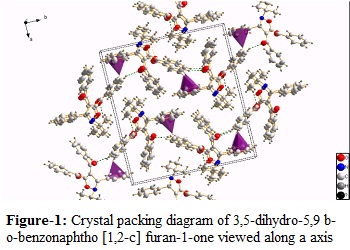
Thomas Hammerschmidt
Ruhr University Bochum, Germany
Title: Three parameter crystal-structure prediction for sp-d valent compounds
Time : 12:20-12:40

Biography:
Thomas Hammerschmidt has his expertise and passion on the reliable and robust prediction of structural stability and phase stability of technologically relevant materials. In order to make direct contact to experiments, he includes finite temperature, complex microstructures and multi-component chemistry. His focus is particularly the development, implementation and application of analytic bond-order potentials for large scale atomistic simulations
Abstract:
The prediction of the crystal structure of a material from only its chemical composition is one of the key challenges in materials design. We use a cluster analysis of experimentally observed crystal structures and derive structure maps that are systematically optimized to reach high predictive power. In particular, we present a three-dimensional structure map for compounds that contain sp-block elements and transition metals in arbitrary composition. The structure map predicts the correct crystal structure with a probability of 86% and has a confidence of 98% that the correct crystal structure is among three predicted crystal structures. The three parameters that span the structure map are physically intuitive functions of the number of valence electrons, the atomic volume and the electronegativity of the constituent elements. We test the structure map against standard density-functional theory calculations for 1:1 sp-d-valent compounds and demonstrate that our three-parameter model has comparable predictive power. We show that the identified parameters are valid for off-stoichiometric compounds and they separate binary and ternary crystal-structure prototypes
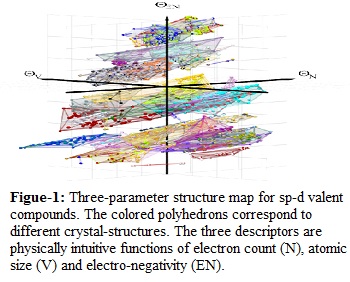
Vesna F Mitrovic
Brown University, USA
Title: Novel magnetism and local symmetry breaking in a Mott insulator with strong spin orbit interactions
Time : 12:40-13:00

Biography:
Vesna F Mitrovic has her expertise in study of microscopic properties of materials using magnetic resonance techniques. She is a graduate of Illinois Institute of Technology and received her PhD from Northwestern University in 2001. Her thesis work was on magnetic resonance studies of high temperature superconductor. In 2003, she joined the Brown Physics Department and she was named Alfred P. Sloan Fellow in 2007 and Fellow of American Physical Society in 2015 for her pioneering contributions to NMR study of low energy excitations in emergent quantum phases.
Abstract:
Study of the combined effects of strong electronic correlations with spin-orbit coupling (SOC) represents a central issue in quantum materials research. Predicting emergent properties represents a huge theoretical problem since the presence of SOC implies that the spin is not a good quantum number. Existing theories propose the emergence of a multitude of exotic quantum phases, distinguishable by either local point symmetry breaking or local spin expectation values, even in materials with simple cubic crystal structure such as Ba2NaOsO6. Experimental tests of these theories by local probes are highly sought for. Our local measurements designed to concurrently probe spin and orbital/lattice degrees of freedom of Ba2NaOsO6 provide such tests. We show that a canted ferromagnetic phase which is preceded by local point symmetry breaking is stabilized at low temperatures as predicted by quantum theories involving multipolar spin interactions. Specifically, we find that the ferromagnetic state is in fact a type of canted ferromagnet with two sub-lattice magnetizations and that cubic symmetry breaking occurs at a temperature above the Néel temperature and it involves deformation of oxygen octahedra presumably reflecting a complicated pattern of staggered orbital order. Our findings are in startlingly good agreement with theoretical predictions based on quantum models. Thus, our results, to be presented, establish that such quantum models represent an appropriate theoretical framework for predicting emergent properties in materials with both strong correlations and SOC, in general
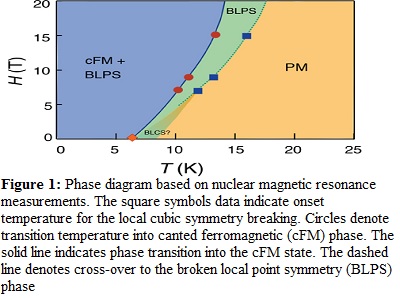
- Speakers Session 2: Crystallography of Novel Materials | Electron Crystallography | Recent development in the X-ray studies| Crystallography Applications
Location: Conference Hall: Zurich

Chair
Vijeesh P
The Cochin College, India
Session Introduction
Vijeesh P
The Cochin College, India
Title: Growth and growth rate analysis of potassium succinate –crystal
Time : 14:00-14:20

Biography:
Vijeesh P is currently an Assistant Professor in the Department of Physics, The Cochin College and Research Scholar in Cochin University of Science and Technology. His major research area is crystallography.
Abstract:
Single crystals of potassium succinate-succinic acid were grown by slow-cooling method. The growth of the crystal is recorded using shadowgraph and the growth rate is evaluated using image processing. The growth rate analysis showed that slow cooling rate enhances the quality of crystal obtained. Also the in situ image analysis of the crystal gives a better method for controlling the growth parameters of the crystal. Semi organic non-linear optical materials play an important role in many fields of science such as information storage systems, data processing systems, information technology, telecommunication, utility equipment development, etc. Their properties like high melting point, dielectric and mechanical stability, second harmonic generation, etc. made them suitable for many applications. Semi organic non-linear materials are developed to overcome the shortcomings of organic non-linear materials such as low transparency and short optical band gap. Semi organic materials formed with ionic salts offer wide range of frequencies. Also it is much easier to grow semi organic materials. This paper presents the design and realization of a crystallizer and its use to synthesize from aqueous solution, structure, crystal growth and growth rate analysis of Potassium Succinate (KS) crystal which belongs to monoclinic system. Even though the evaporation techniques were used for the growth of KS, the slow cooling solution growth of KS is not much tried so far. This method provides comparatively easier and faster method to grow crystals. The solution growth of KS is not much represented in the literature. A crystallizer for slow cooling solution growth is designed and realized and a single crystal of potassium succinate is grown using slow cooling solution growth technique. The growth rate analysis is done by shadowgraph image analysis. The image analysis showed the growth rate of different faces of the crystal
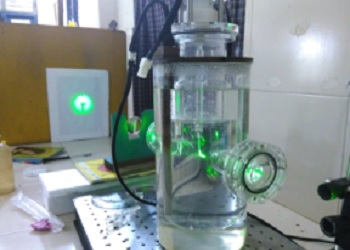
Weiru Wang
Genentech, USA
Title: Structural insights into crenezumab’s mechanism of action
Time : 14:20-14:40

Biography:
Weiru Wang has completed his PhD in Biophysics from Cornell University and Post-doctoral studies from University of California, Berkeley. He is currently a Senior Scientist and a Group Leader in the Structural Biology Department at Genentech, a member of the Roche Group. His research focuses on understanding of molecular basis of protein-drug interactions using biophysical methods, primarily macromolecular crystallography.
Abstract:
Crenezumab is a fully humanized immunoglobulin isotype G4 (IgG4) monoclonal antibody that binds to monomeric as well as aggregated Aβ forms (oligomers, fibers and plaques). Notably, crenezumab binds with higher affinity to Aβ oligomers over monomers and in vitro studies have demonstrated crenezumab’s ability to block Aβ aggregation and promote Aβ disaggregation. To understand the structural basis for this activity and crenezumab’s broad binding profile, we determined the crystal structure of crenezumab in complex with Aβ. The structure reveals a sequential epitope and the conformational requirements for epitope recognition, which include a subtle but critical element that is likely the basis for crenezumab’s versatile binding profile. We find interactions consistent with high affinity for multiple forms of Aβ, particularly oligomers. Crenezumab also sequesters the hydrophobic core of Aβ and breaks an essential salt-bridge characteristic of the β-hairpin conformation, eliminating features characteristic of the basic organization in Aβ oligomers and fibrils, and explains crenezumab’s inhibition of aggregation and promotion of disaggregation. These insights highlight crenezumab’s unique mechanism of action, particularly regarding Aβ oligomers and provide a strong rationale for the evaluation of crenezumab as a potential treatment for patients with Alzheimer’s disease.
Yasuo Norikane
NIAIST, Japan
Title: Light-induced crawling motion of azobenzene crystals on a glass surface
Time : 14:40-15:00

Biography:
Yasuo Norikane has received his PhD in 2001 from University of Tsukuba, Japan, for investigating the photochemistry of intramolecularly hydrogen-bonded molecules, under the supervision of Professor Tatsuo Arai. From 2001-2003, he carried out his Postdoctoral research on novel crystal structure and photo-isomerization in macrocyclic azobenzenes with Dr. Nobuyuki Tamaoki at AIST. After serving as a second Post-doctorate with Professor M. Reza Ghadiri at the Scripps Research Institute, he began his carrier as a Researcher in AIST. He was awarded a Commendation for Science and Technology by The Minister of Education, Culture, Sports, Science and Technology, Japan. He is currently a Group Leader at Electronics and Photonics Research Institute and an Associate Professor at Department of Chemistry, University of Tsukuba. His research focuses on organic photochemistry especially in design and synthesis of photofunctional materials using photochromic compounds such as azobenzene.
Abstract:
Creating self-propelled motion in nano- to macroscopic sized objects has been of interest to scientists. Physical or chemical energy has been used to obtain motion of liquid droplets or solid objects in various media. Using light as an energy source, photochromic molecules have been utilized to induce various mechanical motions of objects. In many cases, the mechanical motions involve the photochemical reactions of azobenzene molecules, which exhibit photoisomerization between trans and cis isomers. So far, various type of motion has been reported; however, photo-induced translational motion of crystals on solid surfaces is unknown. Recently, we have been interested in photochemically-induced phase transitions between solid and liquid phases in photochromic organic compounds such as macrocyclic or rod-shaped azobenzene derivatives. Materials’ showing the phase transition has been of interest because of its interesting properties such as photocontrollable adhesives, photoresists and motion on water surface. Here, we report the novel crawling motion of crystals of simple azobenzenes such as azobenzene and 3,3'- dimethylazobenzene on a glass surface. The motion is directional and continuous when irradiated simultaneously with two different wavelengths (365 and 465 nm). Our method is simple as crystals move on a bare glass surface using a light-emitting diodes or Hg lamp as light sources in a fixed position. The direction of the motion can be controlled by the position of the light sources and the crystals can even climb vertical surfaces. The motion proceeds without changing the crystal orientation, despite the large deformation of the crystal shape. There is a no need for any special treatment such as chemical modification, spatial gradient or application of ratchet potential of the solid surface. It is presumed that the motion is driven by crystallization and melting at the front and rear edges of the crystal, respectively, via photochemical conversion between the crystal and liquid phases induced by the trans-cis isomerization of azobenzenes
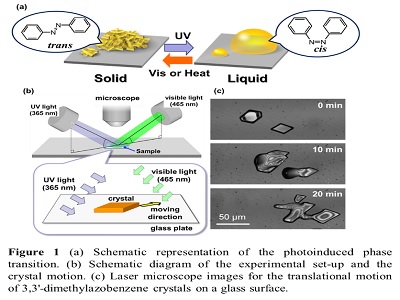
Changyong Park
Carnegie Institution for Science, USA
Title: Hydration and ion adsorption at yttria-stabilized zirconia (YSZ) – water interface
Time : 15:00-15:20

Biography:
Changyong Park is a Beamline Scientist at HPCAT, Sector 16 of Advanced Photon Source located at Argonne National Laboratory. He developed the Resonant Anomalous X-ray Reflectivity technique for probing element-specific ion-adsorption profiles at mineral and aqueous solution interfaces (Park and Fenter, 2007). Combined with the high spatial resolution feature in the High-Resolution X-ray Reflectivity, this technique allows probing both specifically and non-specifically bound ion species at mineral surfaces, thus identifying the sterically resolved adsorbed species, i.e., inner-sphere adsorbed species vs. outer-sphere species.
Abstract:
Understanding hydration and exchange processes at metal-oxide-water interface is important to metal surface passivation. The fine structural information is crucial to describe the molecular characteristics; therefore, an ability to directly probe the hydrated surface structure in-situ is highly desired. Zirconia has numerous applications including gas sensors, solid oxide fuel cell electrolytes, bio-medical materials, substrate for film-growth, etc. and plays a key role in protecting zirconium alloys in highly corrosive environments like nuclear power plants, pressurized water reactors. Its degradation is known primarily caused by the surface interaction with water. Here we report the detailed interfacial hydration structures at 8 mol% yttria-stabilized zirconia (8YSZ) surfaces in (100), (110), and (111) orientation, respectively, with high-resolution X-ray reflectivity (HRXR). We could identify common features of these hydrated surfaces as well as differences intrinsic from the surface chemistry. All three surfaces terminate with significant numbers of point defect presumable caused by the metal depletion and the intrinsic oxygen vacancies. Apparently, water molecules fill those vacancies, forming highly ordered and layered structure near the surfaces. Above the termination planes, two additional adsorbed layers are consisting of the surface hydration structures. The first adsorbed layers likely include metal species as indicated by the promoted electron densities, whereas the second layers seem to be pure water. We also studied the effect of zinc adsorption on the interfacial hydration structures, which show obvious changes in the hydration structure at (100) and (111) surfaces, but minor changes at (110) surface. We determined the detailed element specific adsorption profile of Zn2+ ions at YSZ (110) and (111)-water interfaces with resonant anomalous X-ray reflectivity (RAXR) measurements. With the adsorbed zinc species, the (100) and (110) surfaces maintain the original features in the pristine hydration layers qualitatively, while the interfacial hydration at (111) surface is completely altered by the zinc adsorption.
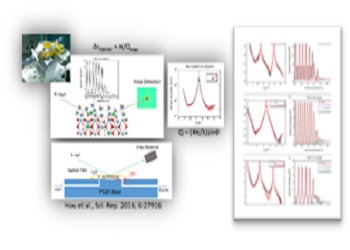
Stephan Rosenkranz
Argonne National Laboratory, USA
Title: Recent developments in single crystal diffuse scattering: Imaging nanoscale disorder in reciprocal space
Time : 15:20-15:40

Biography:
Stephan Rosenkranz is a Senior Physicist in Materials Science Division at Argonne National Laboratory, USA. He has completed his Ph.D. in Physics in 1996 at ETH Zurich. His Diploma in experimental physics in 1992 at ETH Zurich. His research interest is on Structure and dynamics of strongly correlated systems, in particular the role of phase competition in generating complex phenomena. Investigation of long-range order and excitations and short-range correlations and fluctuations due to the presence of ground states with competing order.
Abstract:
Correlated defects are responsible for the functional properties of many materials that underpin energy-related technologies. Single-crystal diffuse scattering using x-rays or neutrons offers a powerful probe of such short-range order in crystalline lattices, but its use has been limited by the experimental challenge of collecting data over a sufficiently large volume of reciprocal space and the theoretical challenge of modeling the results. However, instrumental and computational advances at both x-ray and neutron sources now allow the efficient measurement and rapid transformation of reciprocal space data into three-dimensional pair distribution functions, providing model-independent images of nanoscale disorder in real space. We discuss how these recent developments of efficient methods of measuring single crystal diffuse scattering provide new insights into cation disorder in electrode materials. Large volumes of measured diffuse scattering in reciprocal space are transformed into 3D difference pair distribution functions (3D-ΔPDF) that image defect-defect correlations in real space, allowing a model-independent view of short-range order. We demonstrate this with data on β-NaxV2O5 with x=0.2 and 0.4 over the temperature range 100K to 500K. The sodium intercalants partially occupy sites on two-rung ladders penetrating the framework of vanadium oxide pyramids and octahedra, with no long-range order at room temperature and above. However, at x=0.4, the length scale of sodium-sodium correlations increases significantly below 200K with the emergence of forbidden Bragg peaks below an order-disorder transition. The 3D-ΔPDF directly reveal that the sodium ions occupy alternate sites on each ladder rung, with a zig-zag configuration that is in phase with neighboring ladders. The growth in the length scale of sodium-sodium correlations with decreasing temperature is clearly seen in real space images that allow a quantitative determination of the interionic interactions that impede ionic mobility.
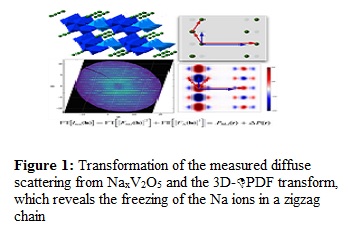
Kensuke Kobayashi
High Energy Accelerator Research Organization (KEK), Japan
Title: Structural response to pressure in 1111-type iron-based superconductor LaFeAsO1-xHx
Time : 16:00-16:20

Biography:
Kensuke Kobayashi has received his doctor’s degree in science from Osaka City University in 2009. Since April 2010, he has been a researcher at Condensed Matter Research Center (CMRC), Institute of Material Structure Science, KEK. At present, he is a Project Assistant Professor (MEXT Element Strategy Initiative) and worked on experimental studies of the structural and electrical properties of materials by means of synchrotron X-ray diffraction under external fields, such as pressure, electric field and low temperature
Abstract:
Iron-based superconductor (iron pnictides) and cuprates are most well-known types of superconductor with critical temperature (Tc) higher than 50 K. In iron-based superconductors, the relation between the maximum Tc and structural parameters of FePn4 (Pn = pnictide) has been proposed as follows: the highest Tc is achieved when the Pn-Fe-Pn bond angle (αPn-Fe-Pn) approaches 109.5° as in a regular tetrahedron of FePn4 or when the Pn height from Fe plane (hPn) ~ 1.38 Å. The application of pressure is a direct and clean way to modify the local geometry of FePn4 without the degradation of the crystal in comparison to the chemical substitution; hence, the detailed crystal structure under pressure warrants further investigation. A systematic study of the crystal structure of a layered iron oxypnictide LaFeAsO1-xHx, with a unique phase diagram of two superconducting phases and two parent phases, as a function of pressure was performed using synchrotron X-ray diffraction. We established that the αAs-Fe-As widens on application of pressure due to the interspace between the layers being nearly infilled by the large La and As atoms. This behavior implies that the FeAs4 coordination deviates from the regular tetrahedron in our systems, which breaks a widely accepted structural guide albeit the increase of Tc from 18 K at ambient pressure to 52 K at 6 GPa for x = 0.2. In the phase diagram, the second parent phase at x ~ 0.5 is suppressed by low-pressure at ~1.5 GPa in contrast to the first parent phase at x ~ 0, which remains robust to pressure. We suggest that the spin/orbital fluctuation from the second parent phase gives rise to the high-Tc under pressure. The pressure responses of the FeAs4 modification, the parent phases, and their correlation are previously unexplained peculiarities in 1111-type iron-based superconductors.
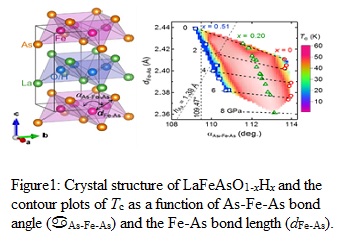
Awalendra Kumar Thakur
Indian Institute of Technology Patna, India
Title: Role of crystal structure stability for energy storage applications
Time : 16:20-16:40

Biography:
A. K. Thakur is currently working at the Department of Physics at the Indian Institute of Technology Patna, India as Associate Professor. His research area is experimental condensed matter physics and applied physics with focus on wide variety of materials including ceramics and polymer composites for device applications including sensors, EMI shielding and renewable energy. His current interest lies in development of new generation of novel functional materials for clean and green energy alternatives
Abstract:
Materials research for energy storage applications has drawn considerable attention in recent years owing to growing alertness on saving earth from impending dangers of pollution, implementation of stricter emission norms across the globe and emerging emphasis on development of clean/green energy alternatives. To meet this challenge, chain of efforts aimed at bringing a paradigm shift in energy research is underway. Potential candidates are solar photovoltaics, fuel cells and storage devices. Further, the best considered and commercially available alternative is solar photovoltaics. However, it cannot act itself as a standalone energy solution. It requires storage devices as backup for providing energy when source of solar energy recedes into background during night. The most sought-after storage devices are high energy density rechargeable batteries, supercapacitors and a hybrid of the two. All energy storage devices are based on conversion of stored chemical energy into electrical energy. Energy storage devices, being multi component system, primarily comprise a separator compartment sandwiched between two electrodes (anode & cathode). Energy storage capability is determined by its crystallographic structure. Crystallographic structure & phase, structural stability and strain bearing capability of these components play a crucial role in determining their suitability as a storage device component. Such applications require a single phase layered crystallographic structure with attributes such as; (a) availability of guest sites for intercalation-deintercalation of cations during charge-discharge cycles, (b) layered tunnel type structure along all the planes in a 3-D geometry, (c) presence of crystalline structure with a flexible framework, (d) sustainability of volume expansion with capability of withstanding lattice strain, (e) phase stability etc.. In the present work, we report a review of the crystallographic features of some important material structures used in energy storage applications. State of-the-art developments in the area covering recent emphasis on development of new generation of materials with structural suitability for high energy density applications is proposed to be discussed with summary of the ongoing work in our laboratory at IIT Patna.
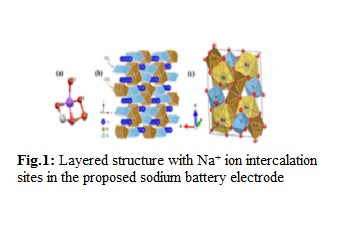
Xing-Zhong Li
University of Nebraska, USA
Title: Landyne, a software suite for electron diffraction simulation and crystallographic analysis
Time : 16:40-17:00

Biography:
Xing-Zhong Li has his expertise in transmission electron microscopy on materials and nanoscience. He started the works on computer programs for electron diffraction simulation and crystallographic analysis a decade ago. He works in Nebraska Center for Materials and Nanoscience, University of Nebraska
Abstract:
Landyne software suite is the 2.0 version of the previous JECP—a Java Electron Crystallography Project. The software suite currently includes eight stand-alone computer programs. Each of them was designed for one topic of application in electron diffraction simulation, crystallographic analysis or experimental data processing and quantification. Figure 1 shows the classification of the computer programs in the Landyne suite according to their functionality. The computer programs have been grouped into a suite to increase the total usefulness and a launcher has been developed for the users to conveniently access all of the computer programs. The purpose of this software suite is twofold: i) as research tools to analyze experimental results, ii) as teaching tools to show students the principles of electron diffraction and crystallography. The software suite was programmed using Java SE Development Kit 8. It has been successfully tested on Microsoft Windows 7, 8 and 10 with a Java virtual machine, i.e. Java 2 Runtime Environment (J2RE). The executable codes, user manuals and a set of crystal structural data are available. The design and functions of the computer programs will be elucidated in this presentation. Three examples are listed here: SAED is used for simulation and analysis of electron diffraction patterns including twins and two phases with a fixed orientation and the search for the zone axes of experimental patterns; SPICA is for the calculation of stereograms and related applications; LAUNCE is for lattice reconstruction and unit cell determination of unknown crystal phases in TEM experiments. The application of the Landyne suite in our recent research works will be also discussed.

Yoshinori Ohmasa
Kansai University, Japan
Title: Double bragg scattering from highly oriented pyrolytic graphite in small-angle X-ray scattering region
Time : 17:00-17:20

Biography:
Yoshinori Ohmasa studied physics at Kyoto University and received PhD from Kyoto University. His doctoral thesis is about the phase transitions and the structure of chalcogen mixed crystals under high pressure. He worked at Kyoto University from 1996 to 2008, and moved to Hiroshima Institute of Technology, and then to Kansai University. His research interest covers the field of structurally disordered materials, such as liquid, glass, alloys and disordered crystals. Especially, he has been studying phenomena related to liquid surface, such as wetting and capillary waves.
Abstract:
Highly oriented pyrolytic graphite (HOPG) is a form of carbon, which is composed of many crystallites arranged uniaxially. The c-axes of the crystallites are aligned along a single direction, while the a- and b-axes are distributed randomly in the plane perpendicular to the c-axis. HOPG is used in a wide range of scientific and technological areas, for example as a monochromator of X-ray and neutron beams.
We measured small-angle X-ray scattering from HOPG and observed radial streak patterns. When the sample is rotated, the number and the direction of the streaks change. The streaks are divided into two categories: (i) A pair of streaks which forms X-shaped pattern. The angle between the two streaks changes with sample rotation, and they appear and disappear in pairs. (ii) A single streak which appears only in a narrow range of the sample rotation angle. Examples of the streak patterns of the type (i) and (ii) are shown in Fig.1 and 2, respectively.
We found that the appearance of the streaks is explained by double Bragg scattering. They appear in the small-angle region because the first scattered X-ray is scattered back to the small-angle region. The streaks of the type (i) is caused by the successive Bragg reflections hkl and hkl with ![]() , and (ii) is by 00l and 00l.The dependence of the streak directions on the sample rotation angle is in good agreement with theoretical prediction.
, and (ii) is by 00l and 00l.The dependence of the streak directions on the sample rotation angle is in good agreement with theoretical prediction.
The double Bragg scattering observed in the present work is an obstacle to obtaining the ‘true’ small-angle scattering. On the other hand, the intensity profile of the double Bragg scattering pattern itself is interesting because it contains various pieces of information on the sample structure. For example, the width and length of the streaks are related to the distribution of crystallites

Serife Yalcin
Harran University, Turkey
Title: How does crystallography affect material properties?
Time : 17:20-17:40

Biography:
Serife Yalcin has completed her PhD from Erciyes University and Postdoctoral studies from Caen University. She has published more than 40 papers in reputed journals and has been serving as an Editorial Board Member of repute.
Abstract:
Statement of the Problem: Developments in science and technology have required the production of new materials and design. Knowing the properties of the materials used to obtain them are helpful to design and manufacture of materials that we need. Crystallography studies have been very important for developing of materials because this studies deal with internal structure, in particular the symmetry of crystal. The majority of the solid materials are composed of crystals. This explains how much important crystallography is in material. The purpose of this study is to determine suitable materials for material science need.
Methodology & Results: Crystallography is the science of structure used for characterization of materials and to determine some physical properties with microstructure and texture analyses. It includes the general features of structure and deals with the mapping of all kinds of systems as geometrical representations. The same material with different crystallographic parameter has different properties. It is hardly possible to develop materials science without crystallographic techniques. As a sample, we will focus on structure of calcium carbonate. Calcium carbonate is one of the most abundant and cheap material found in nature. It can be found in three forms: Calcite, aragonite and vaterite. XRD pattern of aragonite, calcite and vaterite shows difference as seen in Figure-1. These patterns show difference depending on crystal structure. When Scanning Electron Microscopy (SEM) image investigate of different forms of calcium carbonate, it has been observed difference among picture. Calcite structure shows square structure while aragonite and vaterite structure show rod and flower type structure, respectively.
Conclusion & Significance: The results have showed difference depending on the form of calcium carbonate. Young modulus has been obtained 76, 89-193 Pa for calcite and aragonite, respectively. Preparation of materials that is needs of human must be in coordination with crystallography
